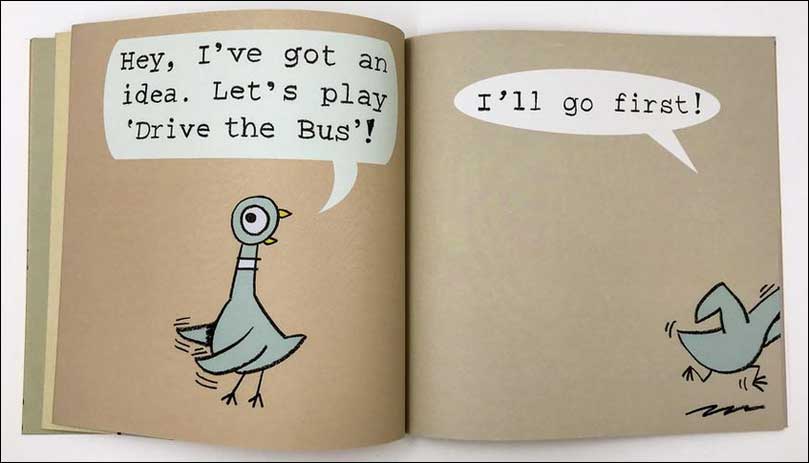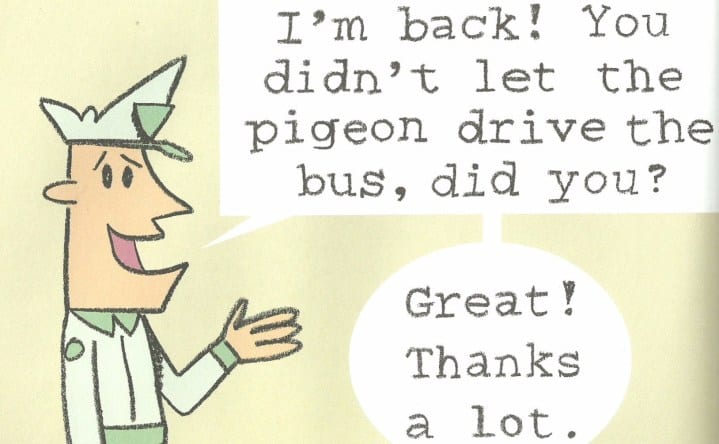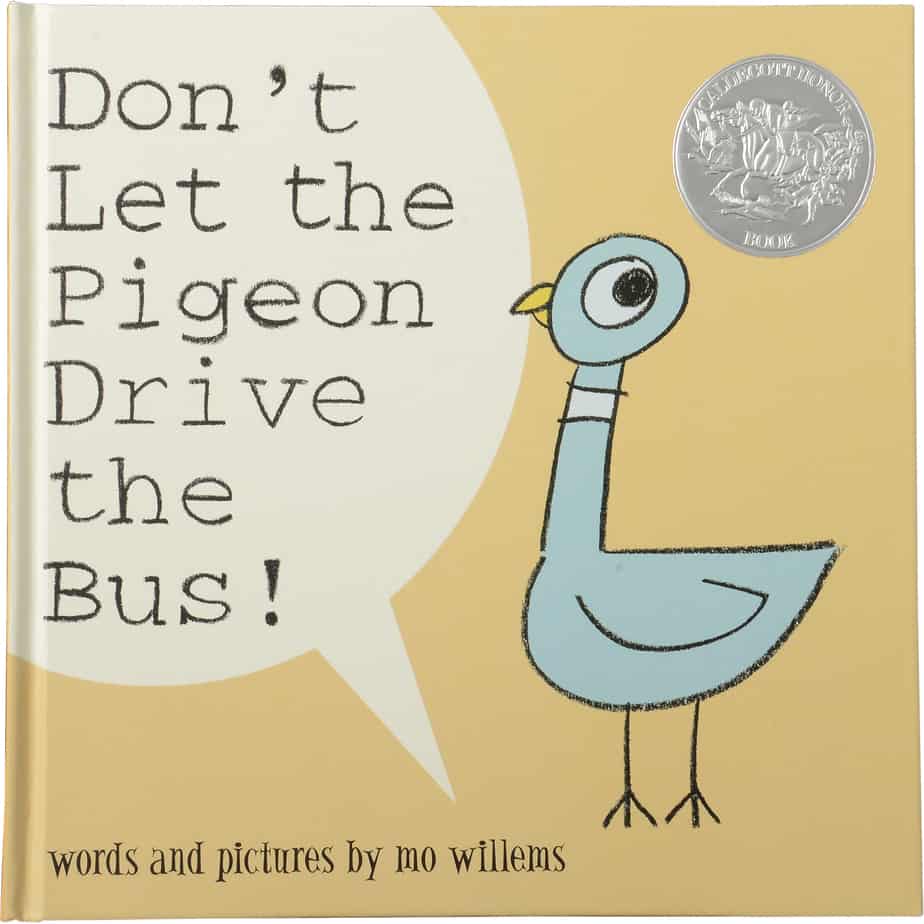A comparison between Mo Willems’ Don’t Let The Pigeon Drive the Bus! and another from the same series, The Pigeon Wants A Puppy, highlights certain shared comedy writing techniques found in both.
TECHNIQUES OF NOTE
- Directly addressing the young reader
- A main character who eventually tries to trick the reader
- A big struggle scene featuring a tantrum
- A circular ending
STORY STRUCTURE OF DON’T LET THE PIGEON DRIVE THE BUS!
SHORTCOMING
Pigeon is only a pigeon and is not to be trusted doing human things (even though he or she speaks English).
DESIRE
This shortcoming is connected to pigeon’s Desire, which is to drive a bus.
OPPONENT
The adult Opponent within the world of the story is the bus driver who, before the title page, has told the reader that he’s just popping out for a few moments — could the reader please not let the pigeon drive the bus while he’s away?
This is funny in its own right because it suggests the pigeon has previously done just this. And the thought bubble coming out of pigeon’s head on the front papers suggests memory, not just wishes, in light of this fact.
But with the bus driver gone, Willems turns the reader into Pigeon’s Opposition, as is the case in Pigeon Wants A Puppy. In this story, the pigeon pleads with the reader and the reader (hopefully) is on side with the authority figure and knows not to say yes.
PLAN
Pigeon’s plan is to make a case with the reader:
- They will be careful.
- They have a cousin who drives a bus. We extrapolate that Pigeon would therefore be excellent at it.
- A sob story: “I never get to do anything!”
- Next, Pigeon tries to trick the reader into playing a ‘game’ which is presumably driving the bus for real.
- Finally, ending this sequence, four ‘pages’ per page, each with a new reason for letting Pigeon drive the bus speeds up the pace and suggests Pigeon goes on and on about this for ages.

BIG STRUGGLE
Pigeon throws a tantrum. Pigeon also threw a tantrum in The Pigeon Wants A Puppy. Big letters are scrawled across the page. Feathers float off (which kind of look like droplets of sweat — because I have anthropomorphised Pigeon).
ANAGNORISIS
We never know exactly what Pigeon is thinking after that because the ‘speech bubble’ is an angry scribble. But Pigeon looks resigned and downcast. Pigeon has the revelation that this is not going to happen.
This is confirmed when the bus driver returns and Pigeon has still not had a go at the wheel.

NEW SITUATION
But this is another circular plot and once the bus drives off, a big, red truck comes along. Pigeon decides they would like to drive that. No words are used for this — just another thought bubble. This time, Pigeon stands on the other side of the page (the right side). This creates a visual ending to THIS particular story.

